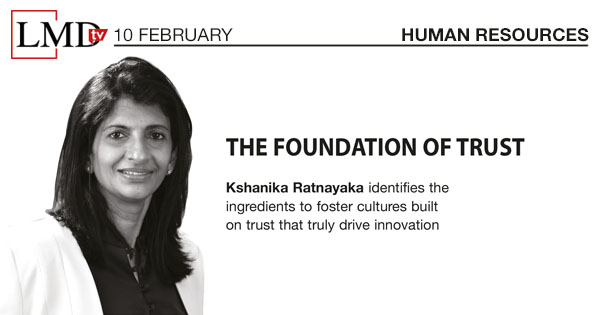
“Any organisation can become a great workplace,” the CEO of Great Place To Work® Sri Lanka Kshanika Ratnayaka explained, while noting that achieving this would be a journey rather than a destination.
She added: “The philosophy of ‘creating a great workplace for all’ means everyone rather than only the C-suite, leadership team or a particular demographic.”
An important aspect of this is what Ratnayaka refers to as a ‘high trust, high performance culture’ – one that enables organisations to maximise their human capital through effective leaders, meaningful values and a foundation of trust.
“These factors act as balancing forces,” she explained, adding that “the outcome is an increase in innovation and continuous improvement by everyone contributing to the organisation, which results in financial growth.”
According to Ratnayaka, there is a strong correlation between workplace culture and performance as many organisations that have been recognised among the best workplaces outperform others. “The best workplaces experience better attrition rates with turnover being 50-65 percent lower,” she revealed, noting that “there is an important correlation between trust levels and reducing costs – it can cost three times as much to hire someone or replace an employee than retaining one.”
In addition to financial indicators, such companies also enjoy improvements in productivity, innovation and agility, as well as a higher calibre of human capital. Furthermore, the workforce is likely to be healthier and less resistant to change, due to an open and engaging culture.
She asserted: “Great workplaces are created by people – viz. great leaders, management teams that execute this and employees who play their part in sustaining this environment.”
Cultures within organisations are defined by the practices, processes and procedures that are implemented on a day-to-day basis, and measures ensuring these are translated into a “great employee experience.”
“Such practices impact employees’ perceptions in terms of their belief in whether the management is credible and if they feel respected, which create fair work environments,” Ratnayaka explained.
Additionally, she pointed out that great workplaces also infuse a sense of pride in employees not to mention building the image of such organisations while ensuring they generate a high level of camaraderie.
When it comes to inclusiveness in the workplace, Ratnayaka stressed that this is not necessarily limited to achieving gender balance in organisations but fostering an inclusive culture for a variety of people in terms of educational qualifications and thought processes.
“You need a mix of people with different skill sets – organisations should be able to attract talent from diverse backgrounds,” she asserted.
Ratnayaka outlined a three step approach to creating a great workplace with the first being management having the intent and vision to foster the right culture. The second is establishing sound practices to support this. And of course, there’s the need for execution.
This approach will enable companies to foster trust between management teams and employees.
In her view, working from home (WFH) has its share of advantages and challenges: “People who always wanted to work from home or have more flexibility had this unconditionally – it was the only option available for a long stretch.”
She added: “They could look back on this and understand that a combination of working from home and in the office might be preferable.”
“There was a shift in work cultures and we realised the importance of being connected to employees,” Ratnayaka observed, elaborating: “We needed deeper connections, understanding and care for employees, and what they were experiencing.”
In summing up, she asserted that “organisations must understand what their employees are dealing with daily and obtain feedback to tailor practices to individuals and create a great workplace.”




